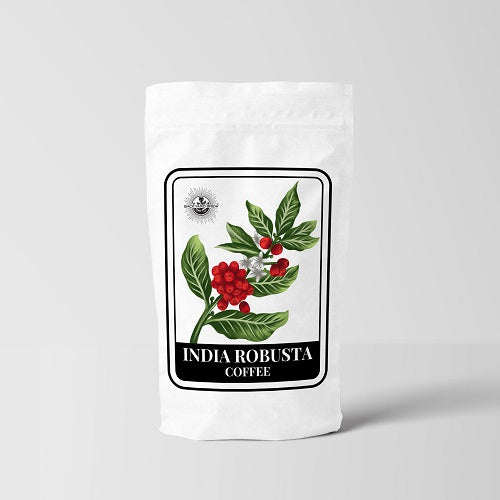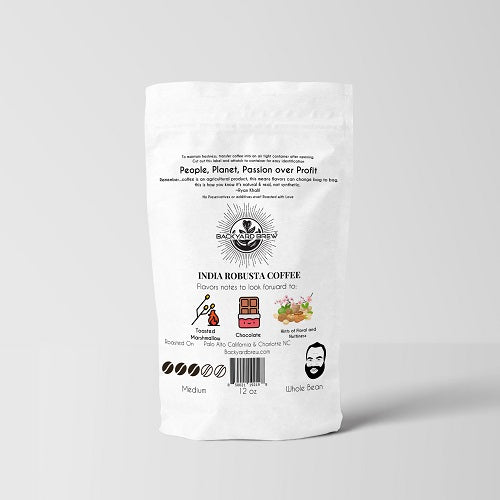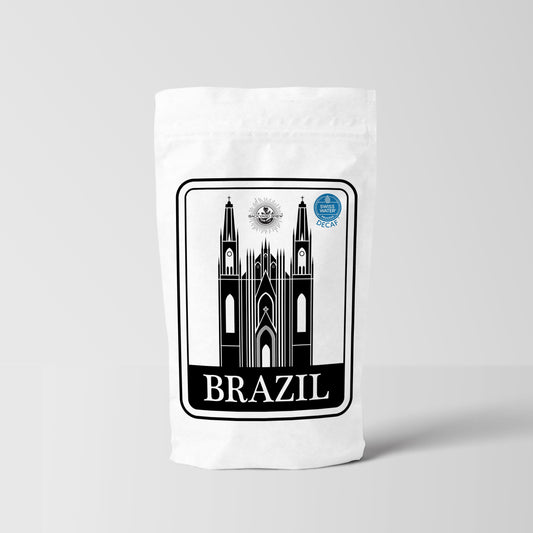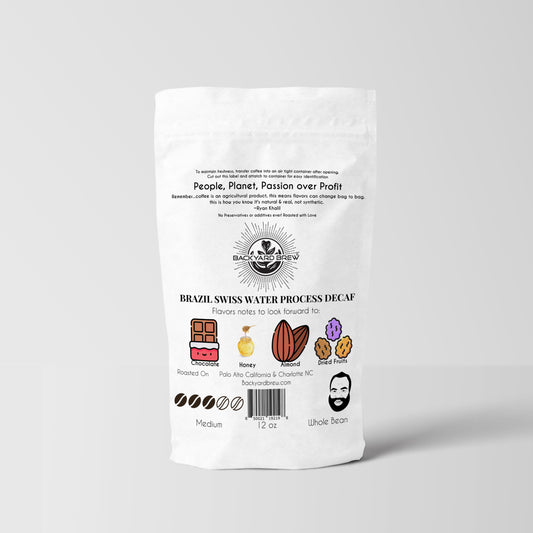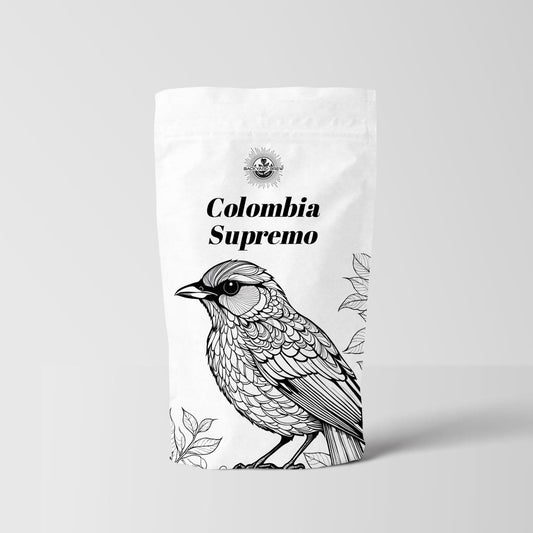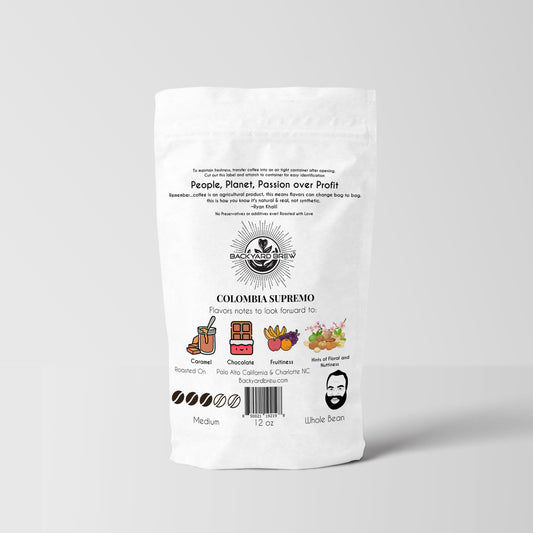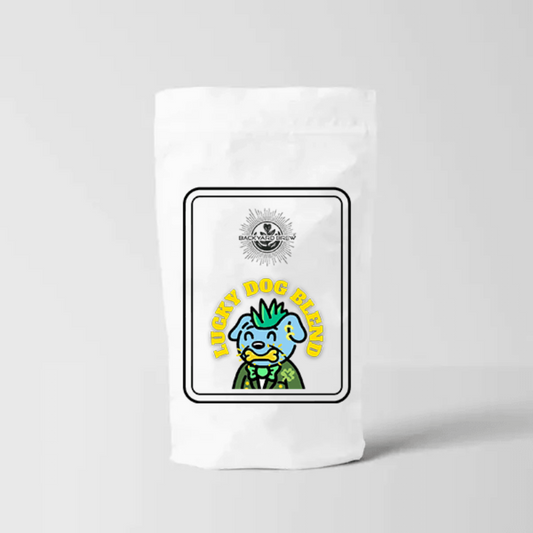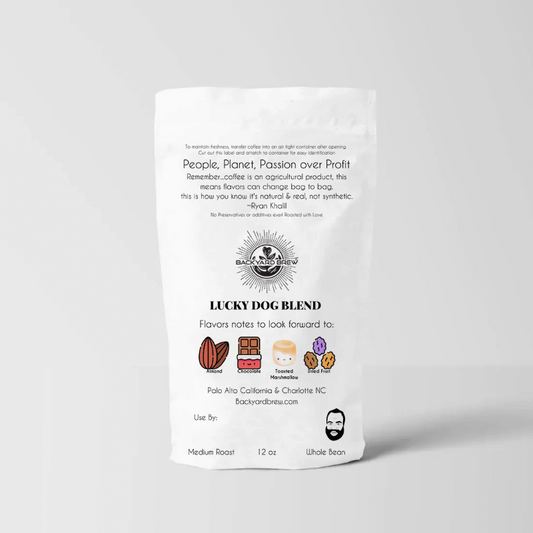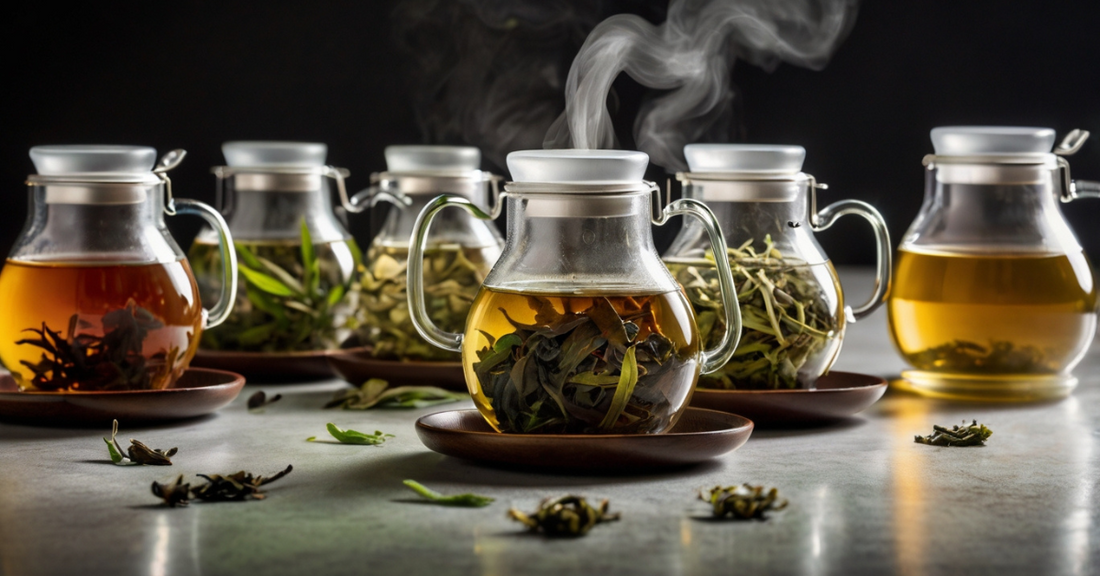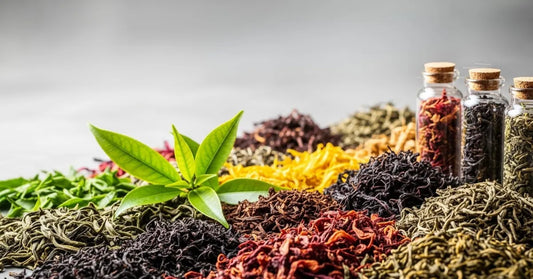How to Brew Different Tea Leaves: A Comprehensive Guide
Related Product
Subscribe
Table of Contents
Have you ever wondered how to brew the perfect cup of tea? The world of tea is vast and varied, with many types of tea leaves to explore. Each type has its own unique flavor, aroma, and brewing method. In this blog, we will talk about brewing different tea leaves, ensuring you can enjoy the best cup every time. So, if you want your teacup to be perfect every time, read this blog till the end. Here we go…
Understanding the Basics of Tea
What makes tea so special? Tea comes from the Camellia sinensis plant. The way the leaves are processed determines the type of tea. This includes Black Tea, White Tea, Oolong Tea, Herbal Tea, and Pu erh Tea. Each type has its own characteristics and brewing requirements.
The Importance of Quality Tea Leaves
Why should you care about the quality of your tea leaves? The flavor and health benefits of tea depend on the quality of the leaves. Look for fair trade tea leaves and those produced through organic tea farming practices. These practices ensure that the tea is not only delicious but also ethically sourced. Now, let’s get back to the main topic…
|
Type of Tea |
Leaf Selection |
Water Temperature |
Steeping Time |
Serving Suggestions |
|
Black Tea |
High-quality loose leaf |
200°F (93°C) |
3-5 minutes |
Enjoy plain or with milk and sugar. |
|
White Tea |
High-quality whole leaves |
160°F (71°C) |
4-5 minutes |
Best enjoyed plain to appreciate flavors. |
|
Oolong Tea |
High-quality whole leaves |
190°F (88°C) |
3-5 minutes |
Can be steeped multiple times; enjoy plain. |
|
Herbal Tea |
Favorite blend or single herb |
Boiling (212°F/100°C) |
5-7 minutes |
Sweeten with honey or add lemon. |
|
Pu erh Tea |
High-quality loose leaf |
200°F (93°C) |
3-5 minutes |
Can be steeped multiple times; enjoy plain. |
Brewing Black Tea
What makes Black Tea a popular choice? Black tea is known for its robust flavor and rich aroma. Thus, making it a favorite among tea drinkers. Proper brewing techniques can enhance its natural qualities, resulting in a satisfying cup.
Step-by-Step Guide to Brewing Black Tea
-
Choose Your Leaves: Opt for high-quality loose leaf Black Tea. Loose leaves generally provide a fuller flavor compared to tea bags, which often contain broken leaves and dust.
-
Measure the Tea: Use one teaspoon of tea leaves per cup (8 oz) of water. Adjust the amount based on your taste preference; more leaves yield a stronger brew.
-
Boil the Water: Bring water to a rolling boil, ideally around 200°F (93°C). This temperature is crucial for extracting the full flavor from the leaves.
-
Steep the Tea: Pour the boiling water over the leaves in your teapot or cup. Steep for 3-5 minutes. A shorter steeping time results in a milder flavor, while a longer steep intensifies the taste.
-
Strain and Serve: After steeping, strain the leaves using a fine mesh strainer or a tea infuser. Pour the tea into your cup. Enjoy it plain or add milk and sugar according to your preference.
|
Step |
Action |
Details |
|
1 |
Choose Your Leaves |
Select high-quality loose leaf Black Tea for better flavor. |
|
2 |
Measure the Tea |
Use one teaspoon of tea leaves per cup (8 oz) of water. |
|
3 |
Boil the Water |
Bring water to a rolling boil, around 200°F (93°C). |
|
4 |
Steep the Tea |
Pour boiling water over the leaves and steep for 3-5 minutes. |
|
5 |
Strain and Serve |
Strain the leaves and pour the tea into your cup. Enjoy plain or with milk and sugar. |
Tips for Perfect Black Tea
Have you tried different brewing times? Experiment with steeping durations to find your ideal flavor profile. Additionally, using filtered water can enhance the taste by removing impurities.
Did you know that Black Tea is the most consumed type of tea in the world? It accounts for about 78% of all tea consumed globally!
Brewing White Tea
Why is White Tea considered delicate? White tea is the least processed of all tea types, made from young leaves and buds. This minimal processing preserves its light flavor and subtle aroma.
Step-by-Step Guide to Brewing White Tea
-
Select Quality Leaves: Choose high-quality White Tea leaves, preferably whole leaves. Look for varieties like Silver Needle or White Peony for the best experience.
-
Measure the Tea: Use one teaspoon of leaves per cup (8 oz) of water. This ratio helps maintain the delicate flavor.
-
Heat the Water: Heat water to about 160°F (71°C). Avoid boiling water, as it can scorch the delicate leaves and alter the flavor.
-
Steep the Tea: Pour the heated water over the leaves and steep for 4-5 minutes. This allows the leaves to unfurl and release their subtle flavors.
-
Strain and Serve: Strain the leaves and pour the tea into your cup. White Tea is best enjoyed plain to appreciate its natural sweetness and floral notes.
|
Step |
Action |
Details |
|
1 |
Select Quality Leaves |
Choose high-quality White Tea leaves, preferably whole leaves. |
|
2 |
Measure the Tea |
Use one teaspoon of leaves per cup (8 oz) of water. |
|
3 |
Heat the Water |
Heat water to about 160°F (71°C). Avoid boiling water. |
|
4 |
Steep the Tea |
Pour water over the leaves and steep for 4-5 minutes. |
|
5 |
Strain and Serve |
Strain the leaves and enjoy your tea plain to appreciate its natural flavors. |
Tips for Perfect White Tea
Have you considered the water temperature? Using cooler water helps preserve the delicate flavors of White Tea, ensuring a more enjoyable cup.
White Tea is made from the young leaves and buds of the tea plant, and it is often considered the least processed tea, preserving its delicate flavor.
Brewing Oolong Tea
What sets Oolong Tea apart? Oolong tea is partially oxidized, placing it between black and green tea in terms of flavor and aroma. This unique processing gives it a complex taste profile.
Step-by-Step Guide to Brewing Oolong Tea
-
Choose Your Leaves: Select high-quality Oolong Tea leaves, preferably whole leaves. Look for varieties like Tie Guan Yin or Da Hong Pao for a rich experience.
-
Measure the Tea: Use one teaspoon of leaves per cup (8 oz) of water. Adjust based on your taste preference.
-
Heat the Water: Heat water to about 190°F (88°C). This temperature is ideal for extracting the nuanced flavors of Oolong.
-
Steep the Tea: Pour the water over the leaves and steep for 3-5 minutes. Oolong can be steeped multiple times, with each infusion revealing different flavors.
-
Strain and Serve: Strain the leaves and enjoy your tea. Oolong can be steeped several times, with each steep offering a new taste experience.
|
Step |
Action |
Details |
|
1 |
Choose Your Leaves |
Select high-quality whole leaf Oolong Tea for the best flavor. |
|
2 |
Measure the Tea |
Use one teaspoon of leaves per cup (8 oz) of water. |
|
3 |
Heat the Water |
Heat water to about 190°F (88°C). |
|
4 |
Steep the Tea |
Pour water over the leaves and steep for 3-5 minutes. |
|
5 |
Strain and Serve |
Strain the leaves and enjoy your tea. Can be steeped multiple times. |
Tips for Perfect Oolong Tea
Have you tried multiple infusions? Experimenting with different steeping times and water temperatures can help you discover the full range of flavors in oolong tea.
Oolong Tea can be steeped multiple times, with each infusion revealing different flavors. Some high-quality Oolong can be steeped up to 10 times!
Brewing Herbal Tea
Why choose Herbal Tea? Herbal tea is naturally caffeine-free and offers a wide variety of flavors and health benefits, making it a versatile choice for any time of day.
Step-by-Step Guide to Brewing Herbal Tea
-
Select Your Herbs: Choose your favorite Herbal Tea blend or single herb. Popular options include chamomile, peppermint, and hibiscus.
-
Measure the Tea: Use one tablespoon of herbs per cup (8 oz) of water. This amount helps to extract the full flavor and benefits of the herbs.
-
Boil the Water: Bring water to a rolling boil. Herbal teas often require boiling water to fully release their flavors
-
Steep the Tea: Pour the boiling water over the herbs and steep for 5-7 minutes. The longer you steep, the stronger the flavor and potential health benefits.
-
Strain and Serve: Strain the herbs using a fine mesh strainer or tea infuser. Pour the tea into your cup. You can sweeten it with honey or add lemon for extra flavor.
|
Step |
Action |
Details |
|
1 |
Select Your Herbs |
Choose your favorite Herbal Tea blend or single herb. |
|
2 |
Measure the Tea |
Use one tablespoon of herbs per cup (8 oz) of water. |
|
3 |
Boil the Water |
Bring water to a rolling boil (212°F/100°C). |
|
4 |
Steep the Tea |
Pour boiling water over the herbs and steep for 5-7 minutes. |
|
5 |
Strain and Serve |
Strain the herbs and enjoy your tea. Sweeten with honey or add lemon. |
Tips for Perfect Herbal Tea
Have you experimented with different herbs? Each herb has its own unique flavor and health benefits. Feel free to mix and match to create your own blends, tailoring the tea to your taste and wellness needs.
Herbal teas are technically not "tea" since they don't come from the Camellia sinensis plant. Instead, they are infusions of herbs, flowers, and fruits.
Brewing Pu erh Tea
What makes Pu erh Tea so special? Pu erh tea undergoes a unique fermentation process that gives it a rich, earthy flavor. It is often aged, which can enhance its complexity over time.
Step-by-Step Guide to Brewing Pu erh Tea
-
Choose Your Leaves: Select high-quality loose leaf Pu erh Tea. Look for varieties like Sheng (raw) or Shou (ripe) Pu erh for different flavor profiles.
-
Measure the Tea: Use one teaspoon of leaves per cup (8 oz) of water. Adjust based on your taste preference, as some Pu erh can be quite strong.
-
Heat the Water: Heat water to about 200°F (93°C). This temperature is ideal for extracting the deep flavors characteristic of Pu erh.
-
Rinse the Leaves: Pour hot water over the leaves and quickly discard the water. This step helps to awaken the leaves and remove any dust or impurities.
-
Steep the Tea: Pour fresh hot water over the rinsed leaves and steep for 3-5 minutes. The steeping time can be adjusted based on your flavor preference.
-
Strain and Serve: Strain the leaves and enjoy your tea. Like Oolong, Pu erh can be steeped multiple times, with each infusion offering a different flavor experience.
|
Step |
Action |
Details |
|
1 |
Choose Your Leaves |
Select high-quality loose leaf Pu erh Tea for the best experience. |
|
2 |
Measure the Tea |
Use one teaspoon of leaves per cup (8 oz) of water. |
|
3 |
Heat the Water |
Heat water to about 200°F (93°C). |
|
4 |
Rinse the Leaves |
Pour hot water over the leaves and quickly discard the water. |
|
5 |
Steep the Tea |
Pour fresh hot water over the rinsed leaves and steep for 3-5 minutes. |
|
6 |
Strain and Serve |
Strain the leaves and enjoy your tea. Can be steeped multiple times. |
Tips for Perfect Pu erh Tea
Have you tried different steeping times? Experimenting with steeping durations can help you discover the depth of flavors in Pu erh Tea. Some enthusiasts enjoy steeping it up to 10 times, with each infusion revealing new notes.
Pu erh Tea can improve with age, much like fine wine! Some aged Pu erh can be worth hundreds or even thousands of dollars.
The Role of Water Quality in Brewing Tea
The water you use can significantly affect the taste of your tea. Poor-quality water can mask the delicate flavors and aromas of the tea leaves. Thus, it leads to a subpar tea experience. The right water enhances the natural characteristics of the tea, allowing you to fully appreciate its unique flavors and aromas.
When brewing tea, the quality of water is just as crucial as the quality of the tea leaves. Water that is too hard, too soft, or contaminated can alter the taste and overall enjoyment of your brew. Therefore, understanding how to choose the right water is essential for any tea enthusiast.
Choosing the Right Water
-
Filtered Water: Using filtered water is highly recommended for brewing tea. Filters can remove impurities such as chlorine, heavy metals, and other contaminants that can alter the flavor of your tea. Filtered water provides a clean slate, allowing the true flavors of the tea leaves to shine through. It’s the best choice for brewing high-quality tea, as it helps maintain the integrity of the tea's natural characteristics.
-
Temperature Matters: Different types of tea require different water temperatures for optimal extraction. For instance, delicate teas like White Tea benefit from cooler water, while robust teas like Black Tea require boiling water. Always check the recommended temperature for the specific tea you are brewing to ensure you extract the best flavors and aromas. Using the correct temperature not only enhances the taste but also prevents bitterness and astringency.
-
Avoid Tap Water: If your tap water has a strong taste or odor, it can negatively impact your tea. Chlorine, minerals, and other impurities can interfere with the delicate flavors of the tea leaves. If you must use tap water, let it sit for a while to allow some of the chlorine to dissipate before boiling. Alternatively, consider using a water filter or bottled water to ensure a better brewing experience.
Ethical Sourcing of Tea Leaves
The ethical sourcing of tea leaves is crucial for several reasons. It ensures that the tea is produced sustainably and fairly, benefiting both the environment and the communities involved in its production. When you choose ethically sourced tea, you support practices that promote social equity, environmental sustainability, and economic viability for farmers. This conscious choice not only enhances your tea-drinking experience but also contributes to a more just and sustainable world.
Fair Trade Tea Leaves:
Fair trade is a certification system that aims to create better trading conditions for farmers and workers in developing countries. It ensures that producers receive fair wages, which helps them achieve a sustainable livelihood.
When you choose Fair Trade tea, you are supporting practices that promote social equity. Farmers are paid a minimum price for their tea, which protects them from volatile market prices. Additionally, Fair Trade standards require safe working conditions, prohibiting child labor and ensuring that workers have the right to organize.
Look for certifications on tea packaging, such as the Fair Trade Certified logo. This label indicates that the tea has met rigorous social, economic, and environmental standards.
Organic Tea Farming Practices:
Organic farming avoids the use of synthetic pesticides, fertilizers, and genetically modified organisms (GMOs). Instead, it relies on natural methods to cultivate crops, promoting biodiversity and soil health.
Choosing organic tea supports sustainable farming practices that protect the environment. Organic farming helps reduce pollution, conserves water, and promotes healthy ecosystems. It also encourages the use of crop rotation and composting, which enhance soil fertility.
Organic tea is often free from harmful chemicals, making it a healthier choice for consumers. By choosing organic, you reduce your exposure to pesticide residues and support a cleaner environment.
Support Local Farmers:
Whenever possible, buy tea from local or small-scale farmers. This helps support local economies and promotes ethical practices. Local farmers often have a deeper connection to their land and community, which can lead to higher quality products.
Supporting local farmers ensures that the benefits of tea production are shared within the community. It helps create jobs, supports local businesses, and fosters economic resilience. Additionally, local farmers are more likely to engage in sustainable practices that protect the environment.
Look for tea brands that emphasize local sourcing or direct trade with farmers. Farmers' markets, specialty tea shops, and online platforms that connect consumers with local producers are great places to start.
|
Benefits of Ethical Sourcing |
Description |
Impact |
|
Fair Wages for Farmers |
Ensures that tea producers receive fair compensation for their work. |
Improves the standard of living for farmers and their families. |
|
Safe Working Conditions |
Promotes safe and healthy working environments, free from exploitation. |
Reduces the risk of accidents and health issues among workers. |
|
Social Equity |
Supports marginalized communities by providing them with fair trade opportunities. |
Empowers communities and promotes gender equality in the workforce. |
|
Environmental Protection |
Encourages sustainable farming practices that protect ecosystems. |
Preserves biodiversity and reduces pollution from synthetic chemicals. |
|
Biodiversity Conservation |
Organic practices promote a diverse range of plants and wildlife. |
Enhances ecosystem resilience and supports local wildlife habitats. |
|
Healthier Products |
Reduces exposure to harmful pesticides and chemicals in tea. |
Provides consumers with safer, chemical-free tea options. |
|
Community Development |
Supports local economies by keeping profits within the community. |
Strengthens local businesses and fosters economic resilience. |
|
Cultural Preservation |
Encourages traditional farming methods and local customs. |
Helps maintain cultural heritage and knowledge among farming communities. |
|
Transparency in Supply Chain |
Promotes traceability and accountability in tea production. |
Builds consumer trust and ensures ethical practices throughout the supply chain. |
|
Consumer Awareness |
Raises awareness about the importance of ethical sourcing among consumers. |
Encourages more informed purchasing decisions and supports ethical brands. |
Final Tips for Tea Lovers
-
Experiment: Don’t be afraid to try different types of tea and brewing methods. Each cup can be a new adventure.
-
Mind the Details: Pay attention to water quality, temperature, and steeping time. These factors can make a big difference.
-
Savor the Moment: Take time to enjoy your tea. Whether it’s a quiet morning or a gathering with friends, tea can enhance the experience.
Conclusion
Now that you know the best brewing methods for different types of tea, you can enjoy each cup to its fullest. Understanding how to brew Black, White, Oolong, Herbal, and Pu erh teas helps you appreciate their unique flavors and aromas. It's also important to consider water quality and the ethical sourcing of tea. Choosing teas that are fair trade and organic not only improves your tea experience but also supports the farmers and communities that grow them.
If you're looking for high-quality, ethically sourced tea, check out Backyard Brew. We offer a great selection of teas that you can enjoy while knowing you're making a positive choice. Happy brewing!

